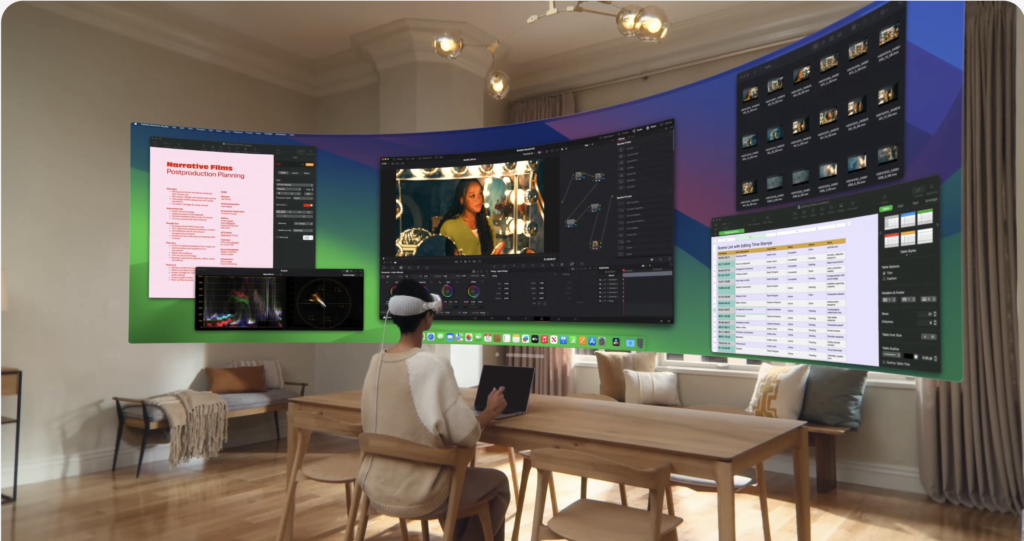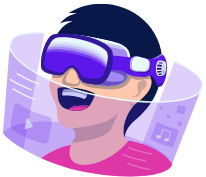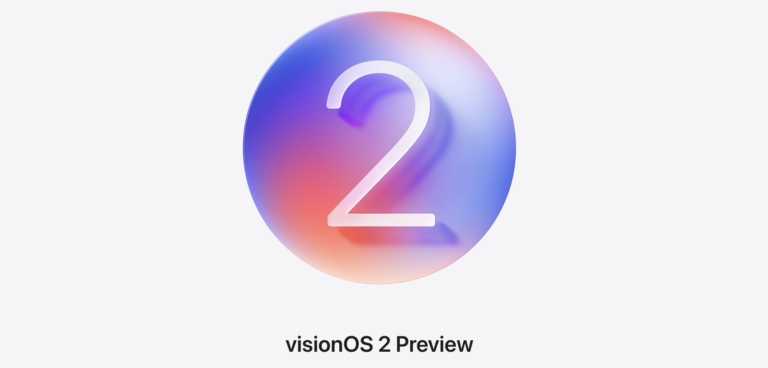Apple’s vision OS 2 is redefining human behavior in digital space. Extending further the iconic features of vision OS 2, it adds new powerful functionalities targeting productivity, creativity and entertainment. In this article, we will be discussing the game-changing solutions visionOS 2 offers along with its features and various applications.
Table of Contents
Transforming Photos and Videos

Spatial Photos
One of the core functionalities in vision OS 2 are its Spatial Photos – transforming a simple 2D photo into an immersive spatial photo. With this feature, users can take an old photo and bring it into 3D space. This improvement provides the possibility to review videos and share memories in a more realistic way.
SharePlay for Photos
SharePlay in Photos lets users browse and engage with spatial photos, videos, and panoramas while on FaceTime calls. This feature enables friends and family to relive memories together, even when they are apart. SharePlay for Photos focuses on the social part of virtual interaction, by uniting people.
Redesigned Photos App
A drastically updated Photos app in vision OS 2 sets out to be tidier and more easygoing. A new, extremely portable media design allows users to access and control photos more efficiently than ever before thanks to enhanced navigation with a common interface. The app also provides instant access to spatial photos so that you can easily view and share these immersive captures.
Enhancing Video Editing

Trim Videos at Scale
With vision OS 2, a new method seep its way into advanced video trimming for videos in your photo library. As of today, users can simply scale things to fit their needs and get really granular with the editing process. It is great for someone that needs a little bit more flexibility with their editing options… such as content creators.
Edit Spatial Videos with Final Cut Pro
Vision OS 2 adds support for professional video editing, including spatial audio and cutouts in Final Cut Pro. With this integration, users can import spatial video to their Mac for editing in Final Cut Pro and watch the final product back over Vision Apple Pro. With this feature new video possibilities are observed.
Improved Navigation and Productivity
New Gestures
Subtle new gesture-based navigation in vision OS 2. With Home View, you can view your smart home devices at a glance and control them with touch or by using simple hand gestures to adjust the volume Thanks to an integrated battery used in Control Center! These make it easier to use the device and access common features.
Customizable Home View
However, vision OS 2 allows Home View to be customized. App organization is handled by the users themselves with pinching and holding to put apps in jiggle mode. This ensures more personalized and faster user experience.
Mac Virtual Display
But vision OS 2 introduces the crazy Mac Virtual Display feature, which presents an unlimited ultrawide screen format that can be wrapped around you. It is like 2x of having a side-by-side, top quality look at focusing on people single monitors! This helps to make users more productive by letting them do multiple things at once.
Immersive Environments and Entertainment
New Environments
New Environments in vision OS 2 Dreamland stunning landscapes surround you. They make apps that can live a bit more beyond the size of your room, giving them an immersive and focused work space.
Enhanced Video Watching in Safari
visionOS 2 changes the way you watch videos in Safari, turning it into a cinematic experience. Giant on-screen icons with light and reflection effects for embedded videos from YouTube, Netflix… This improves the experience of video watching online as well.
Compatibility and Accessibility
New Accessories Compatibility
Vision OS 2 makes use of a Magic Mouse and adds third-party Bluetooth mice. This works as an additional method to connect with Apple Vision Pro in order to provide more flexibility in navigating and interacting, elevating the experience.
Guest User Mode
visionOS 2’s Guest User mode lets friends and family have a go at Apple Vision Pro. This ability saves the guest’s eye and hand data so that they can skip through setup on later uses of Shadow. This then makes it more feasible for multiple people to use the device.
Conclusion on Apple Vision Os 2
visionOS 2 – First Big Step in Spatial Computing Creative productivity developerTooz Technologies has announced the availability of their own new operating system, leaving behind non intuitive old fashioned design. On the other hand, vision OS 2 takes digital interaction to a whole new level – from virtualizing photos and videos, all the way through enhancing navigation capabilities and readability on any screen. With the release date on the horizon, it’s apparent how important visionOS 2 is to defining computing going forward.
FAQs
1. What is vision OS 2?
visionOS 2 is Apple’s operating system for spatial computing, and the new version of its mixed reality device (Apple Vision Pro) to provide a richer functionality based on experience.
2. How does vision OS 2 improve photo and video editing?
With visionOS 2, developers can implement such features as spatial photos and SharePlay for Photos; trimming videos to scale free of compression loss with video editing APIs; and use Final Cut Pro in cooperation with apps on their iOS device that edit the data inside a photo or video file.
3. What new gestures are introduced in vision OS 2?
With visionOS 2, new hand gestures allow users to swipe one palm up or down in Home View, make a claw-hand for adjusting volume and battery check while pinching your thumb with four fingers allows you to open Control Centre end navigate.
4. Can I use third-party accessories with vision OS 2?
In addition to new accessories in visionOS 2 like the Magic Mouse and third-party Bluetooth mice, Apple Vision Pro also now works with all of itoruendo’s accessibility features.
5. What is the Mac Virtual Display feature in vision OS 2?
Additional ultrawideMac Virtual Display for individual users, provides an extra-large & expandable wrap-around-screen that is equivalent to having two 4K displays placed next to one another so you can side-by-side compare and work on them while testing latest macOS apps.

